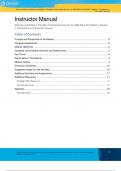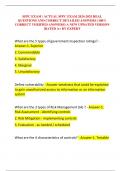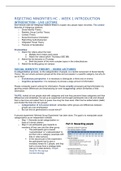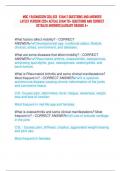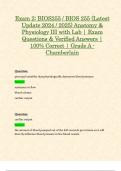Tentamen (uitwerkingen)
Instructor Manual For Principles of Information Security, 7th Edition By Whitman and Mattord | All Chapters With Module (1-12) | Latest Version 2024 A+
- Vak
- Instelling
- Boek
Instructor Manual For Principles of Information Security, 7th Edition By Whitman and Mattord | All Chapters With Module (1-12) | Latest Version 2024 A+ Instructor Manual Whitman and Mattord, Principles of Information Security 7e, ISBN 978-0-357-50643-1; Module 1: Introduction to Information Sec...
[Meer zien]
